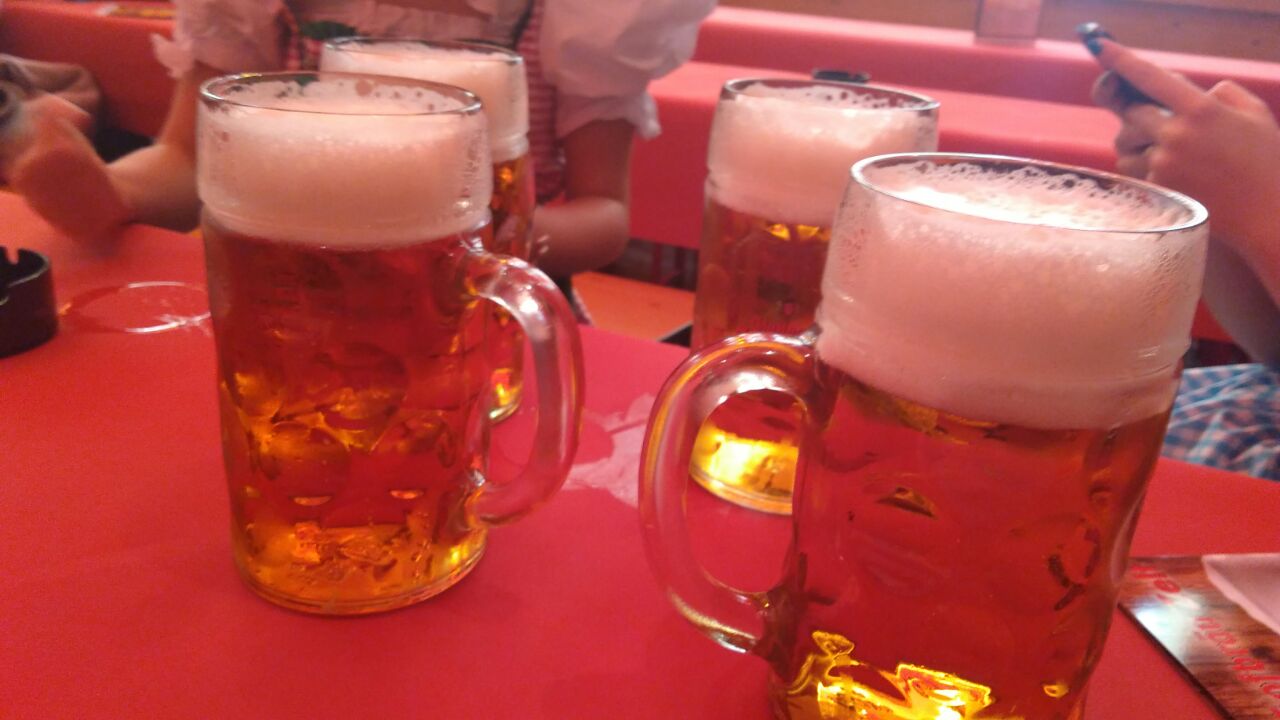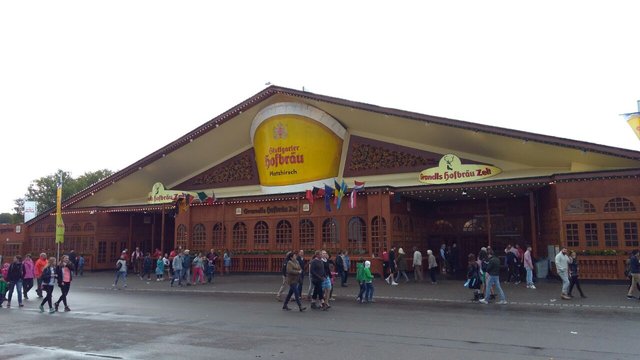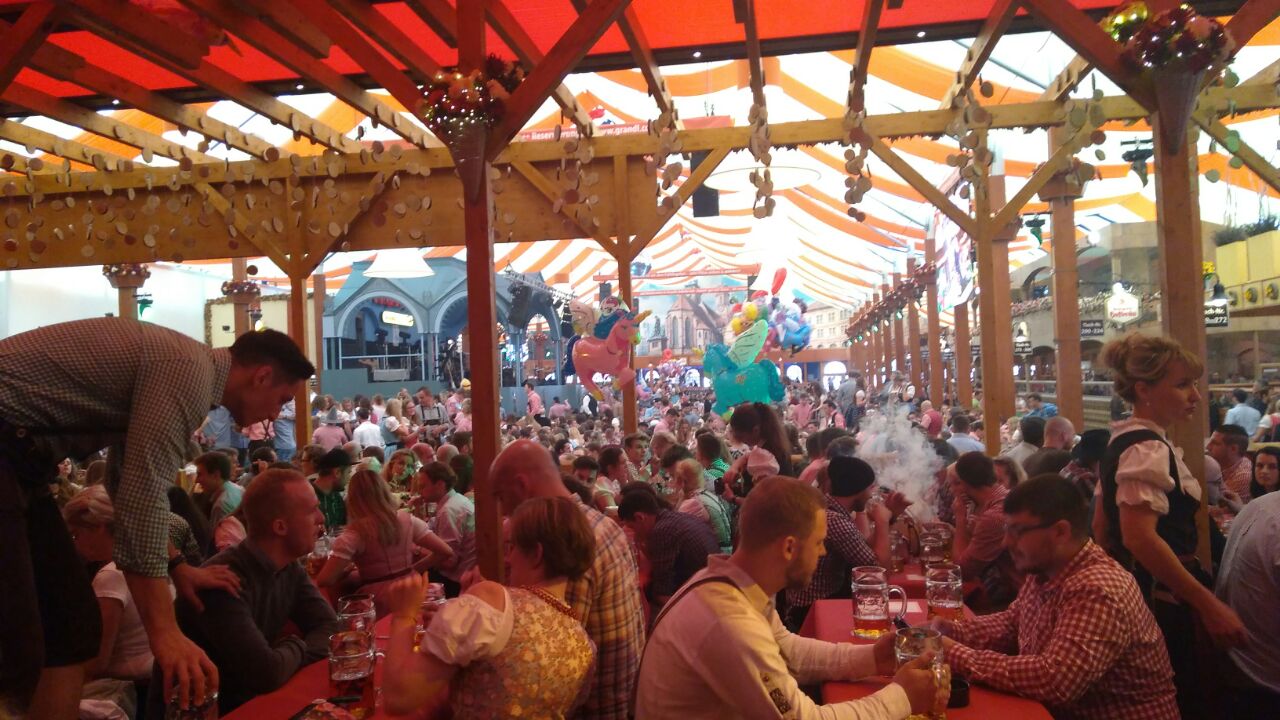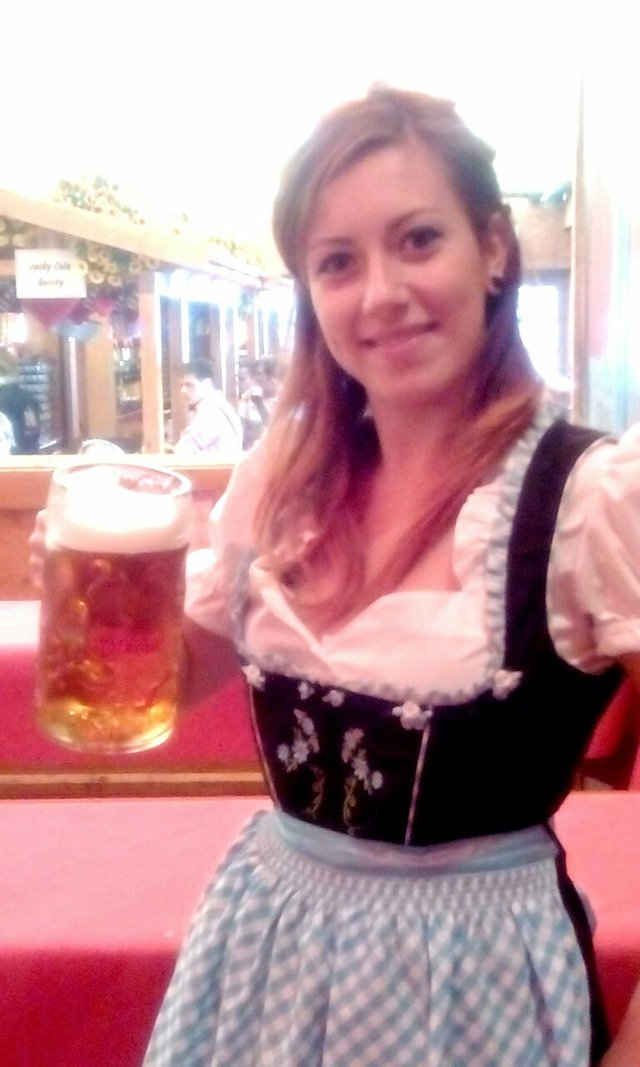White mustache
.jpeg)
For english scroll down, please.
Für Deutsch bitte nach unten scrollen.
Baffi bianchi
Questa mattina ero alle prese con i miei appunti scolastici riguardanti la produzione di birra in Germania. Così ho pensato di condividere con voi quello che ho appreso durante le lezioni.
A cosa pensate se vi nominassi la parola Birra? La maggior parte di voi risponderebbe alcool, amici, pub, Germania. Quello a cui penso io, sono i bianchi baffi di schiuma sopra le labbra dopo aver bevuto il primo sorso di birra dal boccale!
Ma cos’è la birra? La birra è una delle più antiche e deliziose bevande alcooliche presenti al mondo (secondo alcuni studiosi risalirebbe ai tempi della Mesopotamia). E’ la protagonista di un gruppo di amici seduti al bancone di un pub: unisce le loro amicizie e li fa vivere insieme un momento unico all'insegna delle risate.
Reinheitsgebot – La produzione di birra in Germania
La Reinheitsgebot è un insieme di norme tedesche, le quali stabiliscono gli ingredienti da utilizzare per la produzione di birra. I quattro ingredienti sono: malto, luppolo, lievito e acqua.
Il malto è l’ingrediente responsabile del sapore e del colore della birra. Inoltre è il fornitore di zucchero per la fermentazione. Il luppolo è l’ingrediente che ha effetti sia sulla birra sia sull’uomo: oltre a dare sapore e aroma, permette alla birra di durare nel tempo e di avere un agente schiumogeno; sull’uomo ha effetti diuretici, tranquillanti e stimola l’appetito. Il lievito è necessario per la fermentazione alcoolica (converte il malto in alcool ed anidride carbonica), la quale a sua volta garantisce la durata nel tempo. L’acqua, infine, è il diluente, ricco di minerali, indispensabile per unire tutti gli ingredienti. Oltre a ciò, più la durezza dell’acqua è alta, più il sapore del luppolo sarà amaro.
Il processo per la produzione di birra inizia con la frantumazione del malto (orzo o differenti cereali). Il malto frantumato viene mescolato con acqua calda per diversi giorni (6-7 giorni) e viene portato a diverse temperature. Così facendo il malto si trasforma in zucchero (maltosio) e vengono rilasciati tutti gli altri componenti presenti nel cereale (proteine e minerali). Successivamente la parte liquida viene filtrata e separata da quella solida. In seguito viene aggiunto il luppolo, portato ad ebollizione per circa un ora e tutte le sue costituenti aromatiche vengono rilasciate. Nella fase successiva tutte le impurità vengono eliminate (luppolo e le varie proteine), il mosto viene raffreddato e viene aggiunto l’ultimo ingrediente, il lievito, per la fermentazione del mosto (il lievito trasforma gli zuccheri in alcool e anidride carbonica). Dopo alcuni giorni di fermentazione nei serbatoi, la birra viene filtrata e versata in barili o bottiglie.
I diversi tipi di birra e con i rispettivi abbinamenti di cibo
Nel caso vi trovaste in Germania a fare un bel viaggio e state progettando di andare a mangiare in una Brauerei (Birrificio), allora la mia piccola guida vi potrà aiutare nella scelta della birra che fa per voi. Qui di seguito elencherò alcuni tipi di birra (quelli più conosciuti) presenti nelle Brauerei tedesche con i rispettivi abbinamenti con il cibo.
- Pils: dal sapore luppolato e amarognolo, colore oro limpido, servita tra 7° e 9° gradi; questa birra si abbina con insalate, piatti a base di funghi, salmone, frutti di mare, luccio, formaggi, pizza e pasta. Percentuale alcoolica tra 4,5 e 5,5%.
- Helles (Bionda): ha un sapore tra il luppolato e il maltato, anch’essa colore oro ma torbido, servita tra 8° e 9° gradi, si abbina con l’arrosto di maiale, Wurstel e formaggi. Percentuale alcoolica tra 4,5 e 5,5%.
- Weizen (la mia preferita!): questa birra ha un sapore frizzante e fruttato, leggermente dolce (ricorda il sapore dell’estate!!!!), un colore tra l’oro e l’ambrato opaco e caratterizzata da una grande quantità di schiuma; viene servita tra 7° e 8° gradi e si abbina con piatti a base di rafano, salmone, frutti di mare, cotoletta impanata, carpa, formaggi e pizza. La si può trovare in versione doppio malto e scura. Percentuale alcoolica tra 4,5 e 5,5%.
- Dunkel (scura)ed Export: dal forte sapore maltato, colore scarlatto scuro per la Dunkel e oro chiaro per la Export, servite tra 8° e 10° gradi, si abbinano con piatti a base di selvaggina, trota, arrosto di maiale, pollo, Gulasch, carpa, formaggi e Wurstel. Percentuale alcoolica tra 4,5 e 5,5%.
- Bock: ha un sapore molto forte e maltato, dal colore oro ambrato e opaco, servita tra 8° e 10° gradi; si abbina con Gulash, piatti a base di selvaggina, strudel e mousse al cioccolato. La si può trovare come Doppelbock (doppio malto). Percentuale alcoolica tra 5,5 e 8%.
Oktoberfest
Concludendo, come non consigliare di partecipare all’annuale e famosa festa della birra in Germania? La più conosciuta è quella di Monaco, ma anche in altre città viene organizzata questa festa, come ad esempio a Stoccarda (Cannstatter Wasen). Birra, musica e balli vi attendono durante i giorni dell’Oktoberfest. Il divertimento è assicurato!

Cannstatter Wasen
White mustache
This morning I was studying my school notes about the beer in Germany. So I decided to share what I learned during the lessons.
What do you think if I say "Beer"? Alcohol, friends, pubs, Germany, or not? I think about the white mustache of foam on the lips after drinking the first sip of beer!
But what is beer? Beer is one of the oldest and most delicious alcoholic drinks in the world. It’s the protagonist of a group of friends seated in a pub: it connects their friendships and they spend a unique moment of fun.
Reinheitsgebot - Beer production in Germany
The Reinheitsgebot is a set of German rules, which establish the ingredients to be used for the production of beer. The four ingredients are: malt, hops, yeast and water.
Malt is the ingredient responsible for the taste and color of beer. It is also the supplier of sugar for fermentation. Hops is the ingredient that has effects on beer and men: it gives flavor, aroma, durability and a foaming agent; on humans it has diuretic, tranquilizers effects and stimulates the appetite. Yeast is necessary for alcoholic fermentation (converts malt into alcohol and CO2) and guarantees durability. Finally, water is the diluent, rich in minerals, essential for blend all the ingredients. The harder of the water gives also a bitter taste to the hop.
The process for brewing begins with the crushing of malt (barley or different cereals). The crushed malt is mixed with hot water for several days (6-7 days) and is brought to different temperatures. In this way the malt is transformed into sugar (maltose) and all the other components present in the cereal (proteins and minerals) are released. After, the liquid part is filtered and separated from the solid part. Then the hops are added, boiled for an hour and all the aromatic constituents are released. In the next phase all the impurities are removed (hops and proteins), the must is cooled and the last ingredient is added: the yeast. It ferments the must (the yeast turns the sugars into alcohol and CO2). After a few days of fermentation in the tanks, the beer is filtered and spilled into barrels or bottles.
The different types of beer and food combinations
If you woul like to make a nice trip in Germany and eat in a Brauerei (Brewery), then my little guide will help you to choose the right beer. Below I will list some types of beer present in German Brauerei with their respective food combinations.
- Pils: with a hoppy and bitterish taste, limpid gold color, served between 7 ° and 9 ° degrees; possible combination with salads, mushroom, salmon, seafood, pike, cheese, pizza and pasta. Alcohol percentage is between 4.5 and 5.5%.
- Helles (Blonde): has a taste between hops and malt, gold but matte, served between 8 ° and 9 ° degrees; possible combination with roast pork, sausages and cheeses. Alcohol percentage between 4.5 and 5.5%.
- Weizen (my favorite!): This beer has a sparkling and fruity flavor, a bit sweet (it remember the taste of summer!!!!), a color between gold and opaque amber, it is served between 7 ° and 8 ° degrees; possible combination with horseradish, salmon, seafood, breaded cutlet, carp, cheese and pizza. It can be found in a double malt and dark version. Alcohol percentage between 4.5 and 5.5%.
- Dunkel (dark) and Export: with a strong malty flavor, dark scarlet color for the Dunkel and light gold for the Export, served between 8 ° and 10 ° degrees; possible combination with trout, roast pork, chicken, Goulash, carp, cheese and sausage. Alcohol percentage between 4.5 and 5.5%.
- Bock: has a very strong and malty flavor, with an amber and opaque gold color, served between 8 ° and 10 ° degrees; possible combination with Gulash, strudel and chocolate mousse. It can be found as Doppelbock (double malt). Alcohol percentage between 5.5 and 8%.
Oktoberfest
Finally, I recommend you to take part in the annual beer festival in Germany. The most famous festival is in Munich, but also in other cities there are funny festivals, like Stuttgart (Cannstatter Wasen). Beer, music and dancing are waiting you during the Oktoberfest. Fun is guaranteed!

Cannstatter Wasen
Weißer Schnurrbart
Heute morgen habe ich meine Schulunterlagen über das Bier in Deutschland gelesen und ich habe mich entscheiden meine Wissen hier zu teilen.
Was denkt ihr, wenn ich "Bier" nenne? Alkohol, Freunde, Kneipen, Deutschland oder? Ich denke an die weißen Schnurrbart von Schaum auf den Lippen nach dem ersten Schluck Bier!
Aber was ist Bier? Bier ist eines der ältesten und köstlichsten alkoholischen Getränke der Welt. Es ist der Protagonist einer Gruppe von Freunden, die in einem Pub sitzen: es verbindet ihre Freundschaften und die verbringen einen lustiges Moment zusammen.
Reinheitsgebot - Bierherstellung in Deutschland
Das Reinheitsgebot ist ein deutsche Norme, das die Zutaten für die Herstellung von Bier festlegt. Die vier Zutaten sind: Malz, Hopfen, Hefe und Wasser.
Malz ist der Inhaltsstoff, der für den Geschmack und die Farbe von Bier verantwortlich ist. Es ist auch der Lieferant von Zucker für die Gärung. Hopfen ist die Zutat, die Auswirkungen auf Bier und Menschen hat: es gibt Geschmack, Aroma, Haltbarkeit und ist ein Schaumbilder; beim Menschen wirkt es als beruhigend, verdauungsförderung und regt den Appetit an. Hefe ist notwendig für die alkoholische Gärung (wandelt Malz in Alkohol und CO2 um) und garantiert Haltbarkeit. Schließlich Wasser ist das Lösungsmittel für Getreide, reich an Mineralien. Das härtere Wasser gibt dem Hopfen auch einen bitteren Geschmack.
Der Brauprozess beginnt mit der Zerkleinerung von Malz (Gerste oder Weizen). Das zerkleinerte Malz wird mehrere Tage (6-7 Tage) mit heißem Wasser gemischt und auf unterschiedliche Temperaturen gebracht. Auf diese Weise wird das Malz in Zucker (Maltose) umgewandelt und alle anderen Inhaltstoffe der Malz (Proteine und Mineralien) freigesetzt. Danach wird der flüssige Teil gefiltert und von dem festen Teil getrennt. Dann wird der Hopfen zugegeben, eine Stunde gekocht und alle aromatischen Bestandteile freigesetzt. In der nächsten Phase werden alle Getreide entfernt (Hopfen und Proteine), der Most wird gekühlt und der letzte Bestandteil wird hinzugefügt: die Hefe, dass den Most gärt (die Hefe verwandelt den Zucker in Alkohol und CO2). Nach der Gärung in den Tanks (mehrere Tagen) wird das Bier gefiltert und in Fässer oder Flaschen abgefüllt.
Die verschiedenen Arten von Bier und Empfehlung mit Speisen
Wenn Sie gerne in Deutschland eine schöne Reise verbringen und in einer Brauerei essen möchten, mein kleiner Guide kann bei der Auswahl des richtige Bier helfen. Im Folgenden liste gibt es die bekannteste Biersorten in Deutschland mit ihren jeweiligen Speisenempfehlung.
- Pils: mit einem hopfenbitter Geschmack, klare Goldfarbe, serviert zwischen 7 ° und 9 ° Grad; ratsam mit Salaten, Pilzen, Lachs, Meeresfrüchten, Hecht, Käse, Pizza und Pasta. Alkoholgehalt liegt zwischen 4,5 und 5,5%.
- Helles (Blonde): hat einen hopfenbitter und malziger Geschmack, Gold aber matt, serviert zwischen 8 ° und 9 ° Grad; ratsam mit Schweinebraten, Wurst und Käse. Alkoholgehalt zwischen 4,5 und 5,5%.
- Weizen (mein Lieblings!): Dieses Bier hat einen spritzigen und fruchtigen Geschmack, ein bisschen süß (es erinnert an den Geschmack des Sommers!!!!), eine Farbe zwischen Gold und trüb Bernstein, es wird zwischen 7 ° und 8 ° Grad serviert ; ratsam mit Meerrettich, Lachs, Meeresfrüchten, paniertem Schnitzel, Karpfen, Käse und Pizza. Es kann als Weizendoppelbock und dunklen Weizen gefunden werden. Alkoholgehalt zwischen 4,5 und 5,5%.
- Dunkel (dunkel) und Export: mit einem starken malzigen Geschmack, dunkle scharlachrote Farbe für das Dunkel und helles Gold für den Export, serviert zwischen 8 ° und 10 ° Grad; ratsam mit Forelle, Schweinebraten, Huhn, Gulasch, Karpfen, Käse und Wurst. Alkoholgehalt zwischen 4,5 und 5,5%.
- Bock: hat einen sehr starken und malzigen Geschmack, mit einer bernsteinfarbenen und trüb Goldfarbe, serviert zwischen 8 ° und 10 ° Grad; ratsam mit Gulash, Strudel und Schokoladenmousse. Es kann als Doppelbock gefunden werden. Alkoholgehalt zwischen 5,5 und 8%.
Oktoberfest
Schließlich empfehle ich, am den jährlichen Bierfestival in Deutschland teilzunehmen. Das berühmteste Festival ist in München, aber auch in anderen Städten gibt es lustige Festivals, wie Stuttgart (Cannstatter Wasen). Bier, Musik und Tanz warten auf euch allen während des Oktoberfest. Spaß ist garantiert!

It's me!!!
Illiray
Non sapevo della Reinheitsgebot, grazie.
Già...anch'io ho appreso da poco...
Very good article and nice photo with choppe
If you like the good food https://steemit.com/food/@kelos/french-restaurant